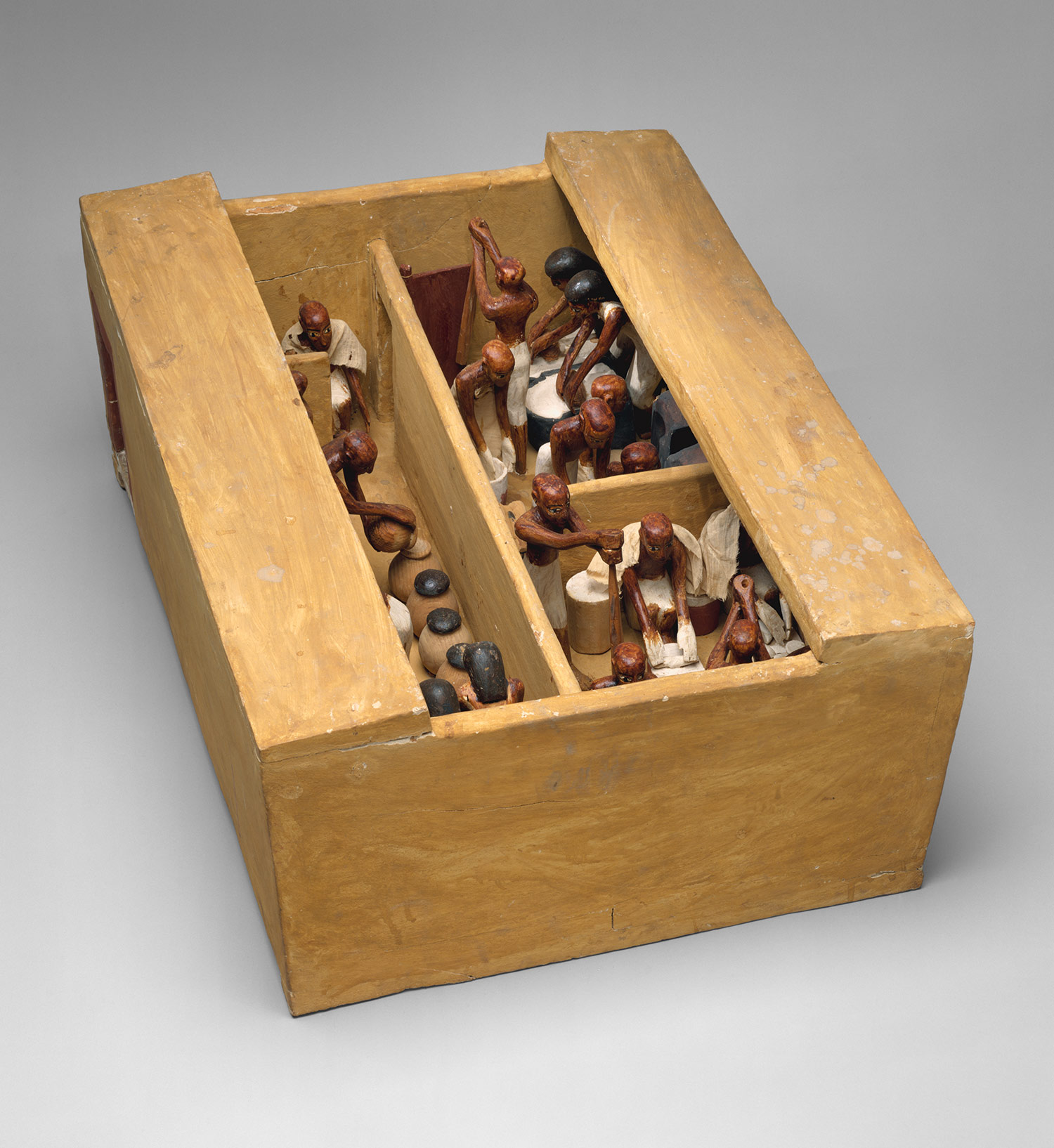What principle do you see as limiting what government can - and more importantly, cannot - do with tax money?
This sums up my thoughts on the matter. I wonder what his would have been. What about you?
What do you think?


 |
| Model of a bakery & brewery, courtesy of the Metropolitan Museum of Art. |


Adam and his family had to go into the Sahara Desert. There was only one well his father knew it. There was a lot of shouting. Everyone was tired. The desert looked quite yellowish greenish. His family had to move right into the middle of it. It was dry dry dry dry dry. The camels have humps that supply a 5-day supply of water. Then they have to drink five days of drink; it takes them one day. They can suck up many many ounces of gallons. Everyone was shouting because the well was up in front of them. All of them could see it, the whole caravan. The desert was not really a safe place. There were bugs. Very dangerous – they had claws, feet, and head. And the little sleeping boy was unharmed!

Much of the New Testament deals with the Law of Moses and with the implications of its fulfillment in the gospel of Jesus Christ. The books of Galatians, Romans, and Hebrews, and important parts of several others, including Acts, James, Colossians, Jude, 2 Peter, and 2 Corinthians, all wrestle with the issue of the Law, and its continued role after the Atonement. Therefore, it is important to understand what the Law was and how it was fulfilled in order to fully understand these portions of the New Testament.
Strictly speaking, the Law of Moses consists of the first five books of the Old Testament—what the Jews call the Torah. These five books of Moses (Genesis; Exodus; Leviticus; Numbers; and Deuteronomy) are also called the Pentateuch, but in the New Testament they are usually just “the Law.” Sometimes the term “the Law” was used for the whole Old Testament, but usually a distinction was made between the books of Moses (the Law) and those of subsequent prophets (the Prophets); hence, the custom in Jesus’ time of referring to the Hebrew scriptures as “the Law and the Prophets” (for example, Matt. 5:17; Matt. 7:12).
For example, the Savior expanded the commandments “Thou shalt not kill” and “Thou shalt not commit adultery,” by now commanding Christians to avoid even hatred or lust. (Matt. 5:28, 44.) Merely abstaining from adultery and murder was no longer sufficient. Christians must now change their very hearts, and this was more than the old Law had required. Also, at the Last Supper Jesus had made it clear that the atonement he was about to accomplish instituted a new covenant which would replace that of Sinai. (See Luke 22:20, 37.) And on at least two occasions in the New Testament (Matt. 5:31–32; Matt. 19:3–9), Jesus made it clear that the teaching of the Law (in this case on the issue of divorce) was not eternal but was only a temporary concession made necessary by the hard-heartedness of Israel. In the Book of Mormon, this was also the teaching of Abinadi to the court of King Noah on the nature of the Law of Moses. (See Mosiah 13:29–31.)And yet it is vital to note that in the teaching of Jesus, the Law was not revoked nor repealed but fulfilled. (Matt. 5:17.) Under the gospel of Christ, murder, adultery, and dishonesty are still prohibited, and the formal requirements of the Law are still essentially in place; but the demand of the Law of Moses has been expanded, has been filled to its fullest extent. Where there is no hatred or greed, there can be no murder; where there is no lust, there can be no adultery. With the coming of Christ, the ethical portion of the Law had not been abolished; it had been caught up by, included in, and expanded to a broader application its intention, its potential as an ethical standard, had been fulfilled.
“Certainly, the shedding of the blood of a beast could be beneficial to no man, except it was done in imitation, or as a type, or explanation of what was to be offered through the gift of God Himself; and this performance done with an eye looking forward in faith on the power of that great sacrifice for a remission of sins.” (Teachings of the Prophet Joseph Smith, p. 58.)
Always a firstborn male animal without blemish was sacrificed to represent the firstborn of God spiritually and physically, a perfect or sinless offering. The shedding of the blood of the animal represented the sacrifice and suffering of an innocent life for others. The offering of the whole animal, at times, was an emblem of the complete and infinite sacrifice that Christ would make. The consumption of the animal by fire, a symbol of purification, suggested the possibility of receiving the sanctifying influence of the Holy Ghost through the exercise of repentance and baptism. Similarly, the ordinance of the sacrament consists of the administration of the “emblems of the flesh and blood of Christ”, in remembrance of his atoning sacrifice and suffering: “… this doth witness unto the Father that ye are willing to do that which I have commanded you.”
“Let us here observe, that a religion that does not require the sacrifice of all things never has power sufficient to produce the faith necessary unto life and salvation; … it is through the medium of the sacrifice of all earthly things that men do actually know that they are doing the things that are well pleasing in the sight of God. When a man has offered in sacrifice all that he has for the truth’s sake, not even withholding his life, and believing before God that he has been called to make this sacrifice because he seeks to do his will, he does know, most assuredly, that God does and will accept his sacrifice and offering, and that he has not, nor will not seek his face in vain. Under these circumstances, then, he can obtain the faith necessary for him to lay hold on eternal life” (Lectures on Faith [1985], 69).
As we sacrifice our selfish desires, serve our God and others, we become more like Him.Elder Russell M. Nelson has taught: “We are still commanded to sacrifice, but not by shedding blood of animals. Our highest sense of sacrifice is achieved as we make ourselves more sacred or holy.“This we do by our obedience to the commandments of God. Thus, the laws of obedience and sacrifice are indelibly intertwined. … As we comply with these and other commandments, something wonderful happens to us. … We become more sacred and holy—[more] like our Lord!” (“Lessons from Eve,” Ensign, Nov. 1987, 88).In fact, the word sacrifice means literally “to make sacred,” or “to render sacred.”…
As we contemplate the replacing of animal sacrifice with the sacrament, we cannot help but notice a strong relationship between the two. Both sacrifice and sacrament:• Are affected by a person’s attitude and worthiness (see Amos 5:6–7, 9–10, 21–22; 3 Ne. 18:27–29; Moro. 7:6–7).• Were designed to be performed by priests officiating in the Aaronic Priesthood (see D&C 13:1; D&C 20:46).• Focus on Christ (see Luke 22:19–20; Alma 34:13–14).• Use emblems that represent Christ’s flesh and blood (see Luke 22:19–20; Moses 5:6–7).• Provide a means whereby one can make and renew covenants with God (see Lev. 22:21; D&C 20:77, 79).• Are performed regularly on the Sabbath as well as on other special occasions (see Lev. 23:15; D&C 59:9–13).• Are associated with meals that symbolically represent the Atonement (see Matt. 26:26; Lev. 7:16–18).• Are the only saving ordinances in which members participate for themselves more than once.• Provide an important step in the process of repentance (see Lev. 19:22; 3 Ne. 18:11; Moses 5:7–8).
If I have a fear, it is that the principle of sacrifice may be slipping away from us. This principle is a law of God. We are obliged to understand it and practice it. If being a member of this Church becomes too easy, testimonies will become shallow, and the roots of testimony will not go down into the soil of faith as they did with our … forefathers. May God grant each of us an understanding of the law of sacrifice and a conviction that it is necessary today. It is vitally important that we understand this law and live it.
